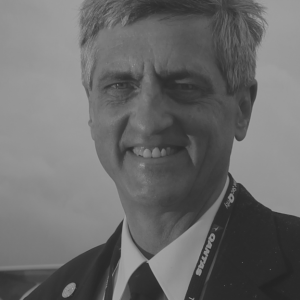|
Credited with saving the lives of more than 460 passengers on an extensively-damaged aircraft earned the Qantas A380 captain worldwide commendation and an avenue to the corporate speaking circuit. Current work Richard de Crespigny has developed into one of Australia’s most sought-after corporate speakers, his presentations focusing on crisis management, leadership, problem solving and teamwork. He has presented to Fortune 500 companies, the Federal Government and its agencies, including defence, safety and investigation. In 2018, Richard released his second book FLY! where he shares the insights and techniques built up over decades in the high-pressure world of military and civilian aviation. Previous experience Background: Melbourne born and educated Richard de Crespigny got his first taste of a future flying career as a 14-year-old when his father organised a tour of the RAAF Academy at Point Cook in Victoria. He had never seen such extraordinary facilities before. He knew, then, that he needed to get a university degree and become an RAAF Officer and Pilot. The rest is history. RAAF: In 1975, aged 17, he joined the RAAF. One year later, he started flying. During his 11 years with the RAAF, he was seconded as Aide-de-Camp to two Australian Governors General – Sir Zelman Cowan and Sir Ninian Stephen. Richard remained with the RAAF until 1986 when he joined Qantas, converting to Boeing 747s. He converted to A380 command in 2008 as one of Qantas’ most senior captains. The Incident: It was at the control of the world’s largest and most advanced commercial jetliner when he and his fellow officers were faced with their greatest challenge. The date was November 4 2010. Early into the Singapore/Sydney leg of flight QF32, one of four engines exploded. The damage to the aircraft was extensive. On top of ensuring that 440 passengers remained calm during the ordeal, Richard had a mammoth task on the flight deck to keep the aircraft in the air and then get it back on the ground. For two hours he and his fellow crew (technical and cabin) remained calm as they planned to stabilise the damage, configure the overweight aircraft, then manoeuvre it towards Changi Airport in Singapore. Once on the ground, a recalcitrant engine refused to shut down, fuel was leaking near white hot brakes and a new environment was set for potential disaster. Passengers remained on board for two nervous hours before they safely disembarked. Author: His autobiography QF32, which tells the story of the incident in gripping detail, is a best-seller. QF32 also won the Best Non Fiction award in the 2013 Australian Book Industry Awards and the Australian Independent Booksellers Best Non Fiction award for books released in Australia in 2012. Recognition: In the 2016 Australia Day Honours, Richard de Crespigny was made a Member of the Order of Australia (AM) for his significant service to the aviation industry, both nationally and internationally, particularly to flight safety and to the community. |

